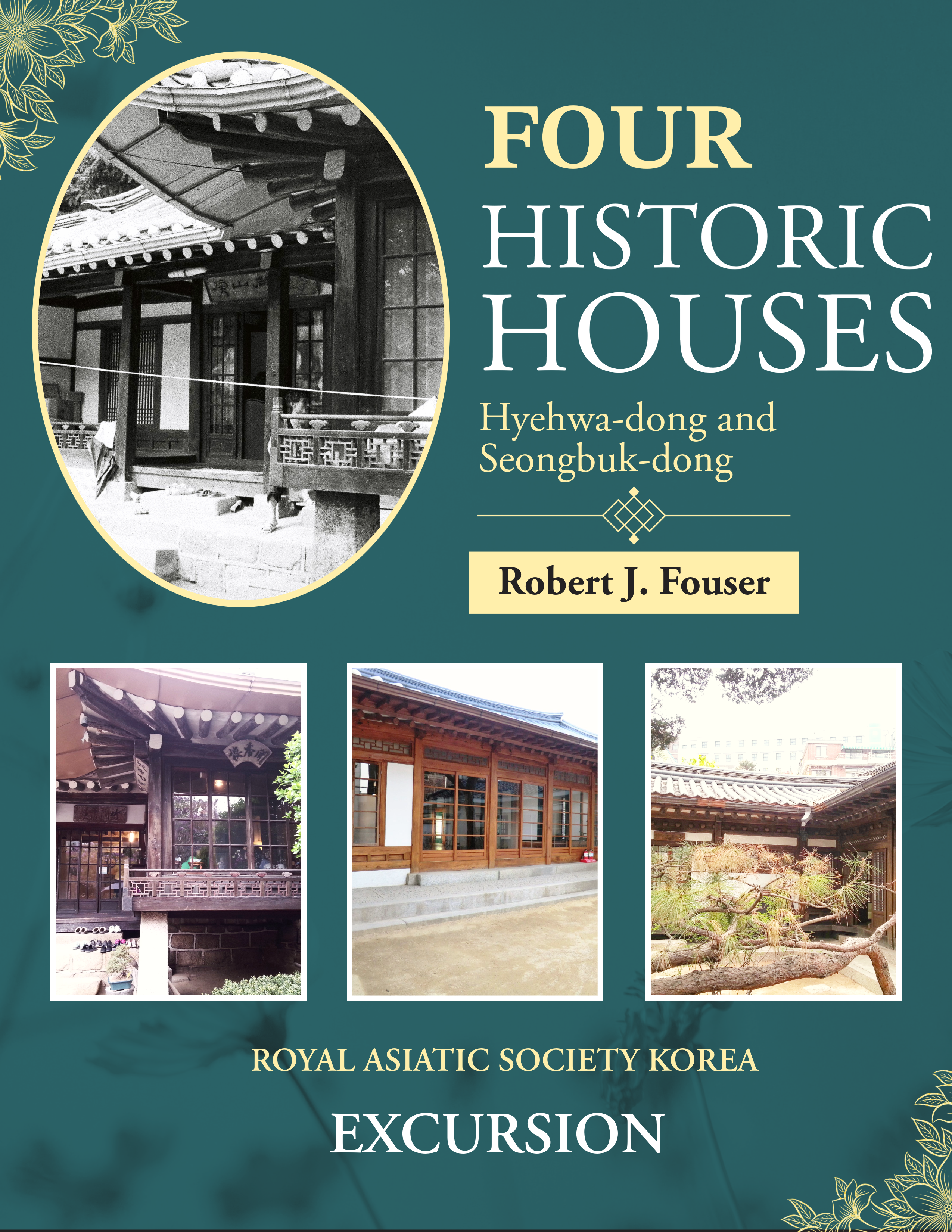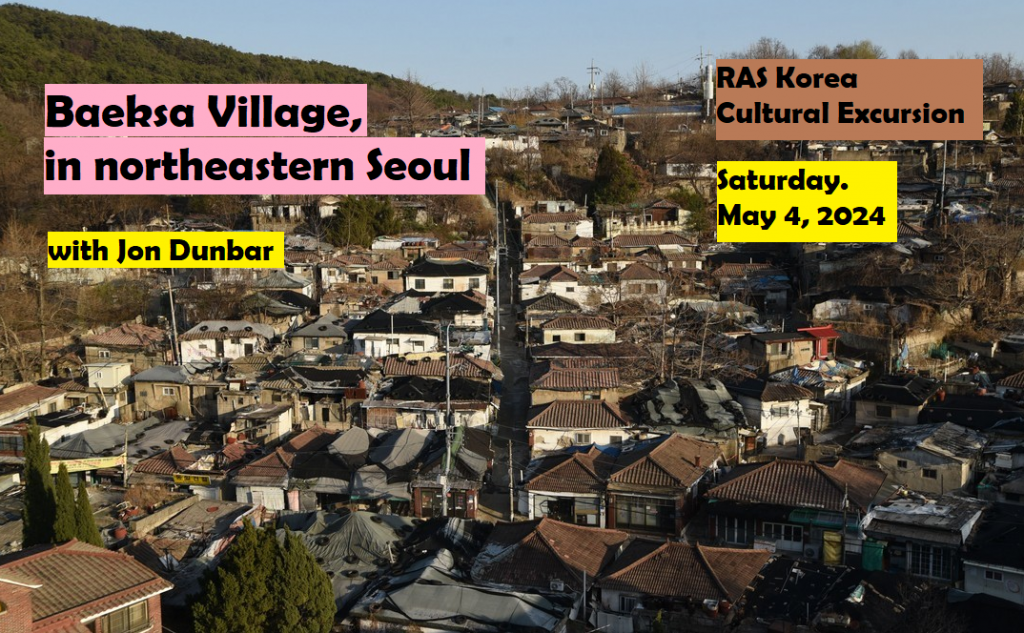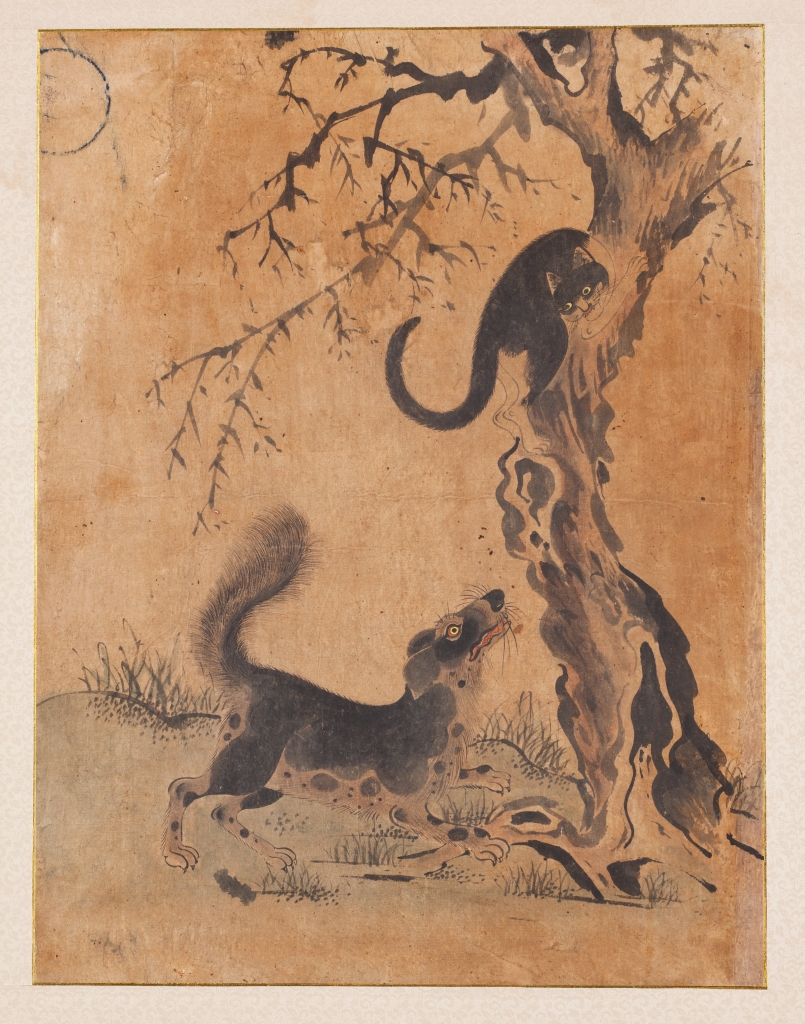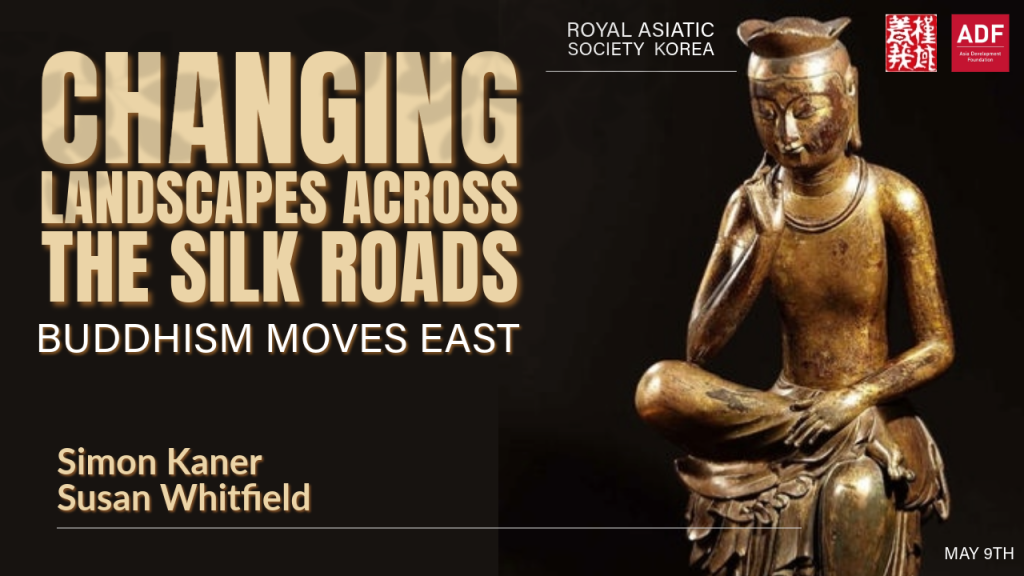

[Cultural Excursion] Four Historic Houses in Hyehwa-dong and Seongbuk-dong
May 11 @ 1:00 pm - 5:00 pm KST
Four Historic Houses in Hyehwa-dong and Seongbuk-dong
LEADER: Robert J. Fouser
DATE: Saturday. May 11, 2024. 1:00PM to 5:00PM
DESTINATION: Hyehwa-dong & Seongbuk-dong
COST: W30,000 for RAS Korea lifetime and annual members; W40,000 for Non-members
MEETING POINT: At the top of Exit 1 of Hyehwa Station (Subway Line 4). At 1:00PM
REGISTRATION: RSVP by May 9 (Thursday) with payment of the fee via bank transfer. Please register one RSVP at a time.
☞Payment to be remitted to the following account:
SHINHAN BANK ACCOUNT # 100-026-383501 (RAS-KB)
*Reservation is not confirmed until payment has been received by RAS Korea in advance of the event.
During this walk, we will explore four historic houses in the Hyehwa-dong and Seongbuk-dong areas of Seoul. Seongbuk-dong is most famous for large houses of the rich and famous, but parts of it closer to the Seoul City Wall still have a number of hanok that reflect the growth of the area in the early 20th century. In the 1920s, Seoul’s population began to grow rapidly, and by the 1930s, growth from Hyehwa-dong inside the Wall had spilled over to outside areas nearby. The four houses on our walk were all built in this wave of early-twentieth century growth. We will look at each house in detail to learn about the various styles of residential architecture that emerged at this time with a focus on hanok.
Our first stop is the house of former Prime Minister Chang Myon (1899–1966). Chang led Korea between the fall of Syngman Rhee in 1960 and Park Jung-hee’s coup d’état in 1961. Though based on hanok design concepts, the house includes Western and Japanese styles and is an excellent example of mid-20th century upper-class residential architecture. From here we will make our way to Choi Sunu’s house. Choi Sunu (1916–1984) was a leading art historian and the fourth director of the National Museum of Korea. Built in the 1930s, the house is an example of a large hanok in the area with two gardens. Choi lived in the house from 1976 to 1984 and turned it into a sanctuary for Korean aesthetics. The National Trust of Korea, Cultural Heritage Foundation has carefully restored the house and has opened it to the public.
On the way to our third house, Yi Tae-jun’s house, we will make a brief visit to the site of the Seonjamdan, a Joseon-period altar dedicated to Seoneungsi, the God of the Silkworms. Yi Tae-jun (1904–1970?) was a novelist who became an important leader in literary circles in the 1930s and 1940s. After liberation from Japanese colonial rule in 1945, he moved to the northern part of the country under Soviet occupation that later became North Korea and remained active in literary circles there until he was purged in 1956. Yi designed and built the house in 1933 and wrote many of his famous works there. The large garden area gives this house a rustic feeling and the house incorporates the aesthetics of a traditional country estate into the design. In the late 1990s, a relative of Yi’s turned the house into a traditional Korean tea house called Suyeonsanbang. Next, we will then make our way to Han Yong-un’s house, the last of the walk. Han Yong-Un (1879–1944) was a Buddhist monk who become one of Korea’s most famous poets. He was also one of the 33 signers of Declaration of Independence that started the March 1st Movement in 1919. Han moved to the Seongbuk-dong in the 1920s and then built this house in 1933 and lived in it until his death in 1944. The house consists of one rectangular building with all the rooms opening into the garden. This pattern is common in warmer southern areas of Korea, but rare in Seoul. Depending on time, we may make a final stop in Bukjeong Village, an old neighborhood built in the shadow of the Seoul City Wall.
We will begin the excursion at 13:00 at Exit #1 of Hyehwa Station (Subway Line 4). The excursion will last until about 17:00 and end at Seongbuk-ro, which leads directly to Hansung University Station (Subway Line 4). Participants may join Robert afterwards for a coffee or an early dinner (not included in the excursion fee) in Seongbuk-dong. The walk is mostly flat, but comfortable walking shoes are recommended.




